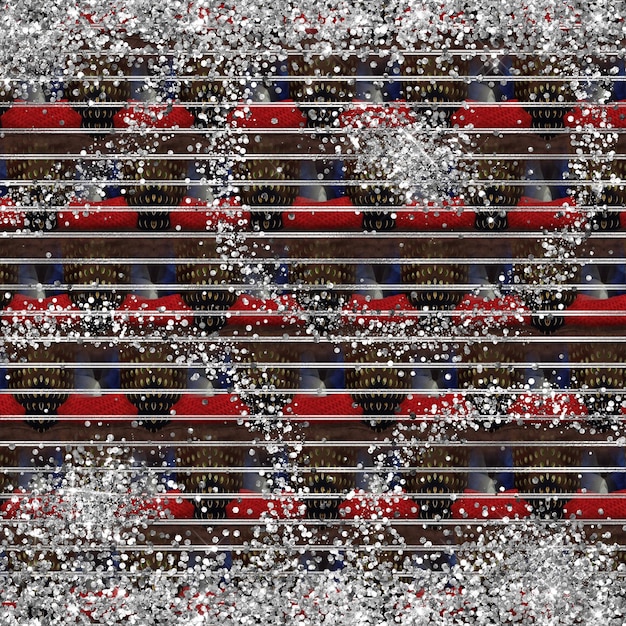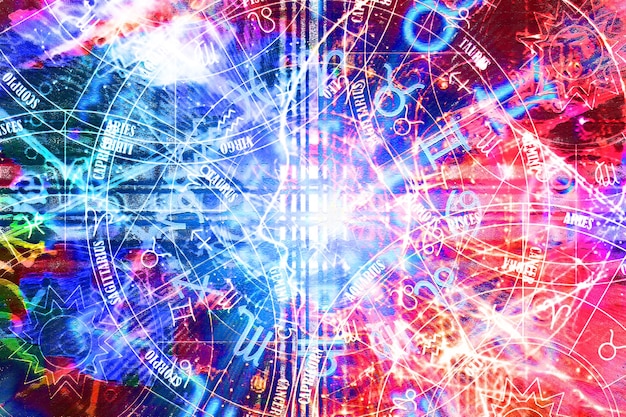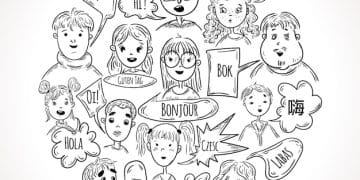Social Media and US Political Polarization in 2025

How social media use impacts political polarization in the US in 2025 is a complex issue, characterized by algorithmic amplification of echo chambers, misinformation propagation, and the erosion of shared realities, significantly deepening ideological divides.
The intricate relationship between digital platforms and political discourse has never been more scrutinized than now. Understanding how social media use impacts political polarization in the US in 2025 is crucial, as these platforms increasingly shape public opinion and inter-group dynamics.
The Algorithmic Echo Chamber Effect
Social media algorithms are designed to keep users engaged. They achieve this by feeding content that users are likely to agree with, based on past interactions. This creates a personalized information bubble, often referred to as an “echo chamber,” where individuals are primarily exposed to opinions and perspectives that reinforce their existing beliefs.
In 2025, the sophistication of these algorithms has reached new heights. Machine learning models analyze vast amounts of user data, including clicks, likes, shares, and even dwell time, to predict content preferences with remarkable accuracy. This continuous feedback loop means that a user leaning even slightly left or right will find themselves increasingly surrounded by content from that same ideological spectrum, while dissenting views are systematically filtered out.
Reinforcing Existing Biases
The algorithmic echo chamber doesn’t just limit exposure to diverse viewpoints; it actively reinforces existing biases. When users consistently see content that validates their worldview, their conviction in those views strengthens. This process, known as confirmation bias, is amplified in the digital realm.
- Selective Exposure: Users are naturally drawn to information that aligns with their beliefs.
- Algorithmic Amplification: Social media platforms then prioritize this content, creating a self-perpetuating cycle.
- Reduced Cognitive Dissonance: Constant affirmation means less exposure to ideas that might challenge or nuance one’s perspective, reducing the likelihood of cognitive dissonance.
This dynamic makes it incredibly challenging for individuals to encounter and genuinely consider alternative viewpoints. The result is a society where citizens on opposite ends of the political spectrum live in increasingly separate information universes, each convinced of the righteousness of their own deeply entrenched positions.
The Disappearance of Shared Realities
A significant consequence of these echo chambers is the erosion of a shared social reality. When different groups are exposed to fundamentally different sets of “facts” or interpretations of events, consensus becomes nearly impossible. What one side perceives as an undeniable truth, the other views as a partisan lie. This divergence in perceived reality underpins much of the political polarization observed in the US today.
Consider a major political event or policy. Depending on the algorithms at play, a user might see overwhelming praise or scathing condemnation, with little in-between. This absence of a common ground for factual discourse hinders constructive debate and compromise, pushing political factions further apart and making even basic understanding a monumental task.
The Proliferation of Misinformation and Disinformation
Beyond echo chambers, social media’s structure also facilitates the rapid spread of misinformation (unintentionally false information) and disinformation (intentionally false information). In 2025, the sophistication of these campaigns, often powered by AI, presents an even greater challenge to democratic discourse.
False narratives, conspiracy theories, and emotionally charged untruths can go viral within hours, reaching millions before any fact-checking efforts can take hold. These narratives often tap into existing anxieties or prejudices, making them particularly sticky and resistant to correction. The speed and reach of social media platforms mean that a single piece of disinformation can significantly shape public opinion and contribute to political divides long before it is debunked.

Emotional Contagion and Outrage Amplification
Social media platforms are designed to elicit strong emotional responses, as these emotions drive engagement. Content that evokes anger, fear, or outrage is often algorithmically prioritized, leading to what some call “outrage amplification.” This plays directly into political polarization.
- Faster Spread: Emotional content, especially negative, spreads faster than neutral or positive content.
- Confirmation of Group Identity: Sharing outrage against an opposing group reinforces one’s own group identity and solidarity.
- Dehumanization: Constant exposure to negative portrayals can lead to the dehumanization of political opponents, making compromise seem unthinkable.
When platforms reward highly emotional and often inflammatory content, they inadvertently fuel a cycle of antagonism. This emotional contagion makes it harder for individuals to engage in rational political discourse, instead favoring reactive and often aggressive interactions. Political disagreements transform into moral crusades, leaving little room for nuance or common ground.
Deepfakes and Synthetic Media
The advent of sophisticated AI-generated content, particularly deepfakes, adds another layer of complexity to the misinformation challenge. In 2025, it’s increasingly difficult to distinguish between authentic and synthetic media, making it easier for malicious actors to create convincing false narratives involving political figures or events.
A video or audio clip that appears to show a politician saying something they never did can instantly ignite controversy and further polarize an already divided electorate. The ability to fabricate convincing evidence erodes trust in traditional media, institutions, and even our own perceptions, deepening the public’s descent into a state of uncertainty regarding objective truth.
Weakening of Traditional Gatekeepers
Historically, news organizations and established media outlets served as gatekeepers, curating information and providing a shared framework for public discourse. Social media has significantly weakened this role, allowing anyone to publish and distribute information, regardless of its accuracy or intention. This democratization of information comes with a significant downside: the erosion of journalistic standards and the proliferation of less reliable sources.
In 2025, many individuals get their news directly from social media feeds, often bypassing traditional news sources entirely. This means they are less likely to encounter professional fact-checking, editorial oversight, or diverse journalistic perspectives. Instead, they consume content from influencers, partisan blogs, or even foreign state-sponsored accounts, all vying for attention and often operating without the ethical constraints of traditional journalism.
Erosion of Trust in Institutions
The constant flow of subjective, unverified, and often sensationalized content on social media contributes to a broader erosion of trust. Not just in traditional media, but in government, scientific institutions, and even the electoral process. When every claim is challenged and every institution is scrutinized through a highly polarized lens, the foundations of collective trust begin to crumble.
This decline in trust creates an environment ripe for further polarization. If citizens don’t trust the same sources of information, they cannot agree on fundamental facts, making it impossible to address shared problems. Each political side retreats further into its own ideological bubble, distrusting any information that emanates from the “other” side or from neutral institutions perceived as biased.
Filter Bubbles and Selective Engagement
A “filter bubble,” a term closely related to echo chambers, describes the intellectual isolation that occurs when websites tailor information to an individual user based on their perceived interests, inferring from past clicks, search history, and location. In 2025, these bubbles are more pervasive and sophisticated than ever, quietly shaping our understanding of the world.
Unlike an intentional echo chamber that a user might seek out, filter bubbles are largely created by algorithms without the user’s explicit consent or awareness. This passive filtering means individuals are often unaware of the breadth of information they are missing, reinforcing existing worldviews without conscious effort. This lack of informational diversity inherently fuels political polarization, as people are not exposed to the nuances or counterarguments necessary for a holistic understanding of complex issues.
Perceived Majority and Groupthink
Within these filter bubbles, individuals are often led to believe that their opinions are held by a larger segment of the population than they actually are. This “perceived majority” effect can strengthen convictions and make individuals less willing to compromise. If everyone in your digital world agrees with you, it’s easy to assume your viewpoint is universally correct and any opposition is fringe or ill-informed.
This can lead to dangerous groupthink, where individuals conform to the dominant opinion within their bubble to avoid cognitive dissonance or social ostracism. For political discourse, this means a reduced capacity for critical self-reflection and an amplified sense of righteous indignation against those outside the bubble.
- Suppression of Dissent: Individuals may be less likely to voice dissenting opinions if they perceive strong consensus within their digital group.
- Increased Certainty: Constant validation leads to an unshakeable belief in one’s own political correctness.
- Reinforced Stereotypes: Negative stereotypes about opposing political groups can proliferate within bubbles, untempered by real-world interaction.
The insular nature of filter bubbles thus directly contributes to the hardening of political lines, as each side becomes more convinced of its own moral superiority and the irrationality or maliciousness of the other. This digital insularity translates into real-world political stalemate and increased social tension.
Online Anonymity and Disinhibition
The perceived anonymity and psychological distance offered by online interactions contribute significantly to political polarization. Behind a screen, individuals often feel less accountable for their words, leading to a phenomenon known as the “online disinhibition effect.” This allows for more aggressive, less considerate, and outright hostile communication than would occur in face-to-face settings.
In 2025, this effect continues to thrive, enabling forms of political discourse that are often vitriolic and personal, rather than substantive. Online discussions frequently devolve into ad hominem attacks, name-calling, and tribalistic rhetoric, rather than productive debate about policies or principles. This aggressive communication style alienates those who might otherwise seek common ground and pushes individuals further into their corners, where they feel safe to express extreme views.
Cyberbullying and Harassment
The disinhibition effect also plays a role in the prevalence of cyberbullying and harassment in political discussions. Individuals who express dissenting opinions, even politely, can become targets of coordinated attacks, threats, and public shaming. This creates a chilling effect, discouraging moderate voices from participating in online political discourse for fear of reprisal.

When moderate voices are silenced or driven away, the online political sphere becomes dominated by the most extreme and passionate voices, further distorting the perceived spectrum of political opinion. This creates a feedback loop where the loudest, most extreme voices get amplified, making the political landscape appear more polarized than it might be in reality, and frightening away any attempts at bridging divides.
Lack of Non-Verbal Cues
Face-to-face communication relies heavily on non-verbal cues—tone of voice, body language, facial expressions—which convey empathy, nuance, and intent. Online, these cues are largely absent, leading to frequent misunderstandings and misinterpretations. A sarcastic comment might be taken as genuine anger, or a nuance might be entirely missed.
This absence makes it harder to build rapport, de-escalate tensions, or find common ground. Political discussions become an arena for written word sparring, where every statement is viewed through a suspicious and often hostile lens, making genuine understanding and compromise increasingly elusive. The result is a cycle of miscommunication that amplifies perceived differences and solidifies existing ideological boundaries.
The Speed and Scale of Opinion Formation
Social media has dramatically accelerated the pace at which opinions are formed and spread. What once took weeks or months through traditional media cycles can now happen in hours. This hyper-speed context makes it difficult for nuanced arguments to gain traction, as simpler, more emotionally resonant messages often win out.
In 2025, the pressure to react quickly to trending topics or breaking news means less time for critical thinking and reflection. Opinions are often formed reactively, based on incomplete information or sensationalized headlines, and then rapidly disseminated. This creates a volatile political environment where public sentiment can shift dramatically, making rational, long-term policy debates challenging.
Instantaneous Feedback Loops
The instantaneous feedback loop of likes, shares, and comments validates opinions instantly, regardless of their factual basis. This immediate social reinforcement incentivizes users to post content that generates maximum engagement, which often means content that is provocative, extreme, or emotionally charged. Nuanced opinions or calls for moderation are less likely to generate this kind of viral traction.
This system, therefore, inherently rewards extremity and penalizes intellectual humility or balanced perspectives. Users, consciously or unconsciously, adapt their political expression to this environment, pushing the boundaries of discourse further apart in a quest for validation and visibility. The result is a highly competitive and often toxic marketplace of ideas where only the most polarizing views thrive.
Declining Empathy and Understanding
Perhaps one of the most insidious impacts of social media on political polarization is the decline in empathy for those with differing views. When individuals are constantly exposed to negative portrayals of the “other side” within their echo chambers, and engage in disinhibited, hostile online interactions, it becomes increasingly difficult to see political opponents as fellow citizens with legitimate concerns.
The digital environment can foster a sense of “us versus them,” where the opposing political group is seen not just as wrong, but as inherently malicious or unintelligent. This dehumanization makes dialogue, compromise, and mutual understanding nearly impossible, deepening the chasm of political polarization.
Limited Exposure to Diverse Perspectives
As individuals spend more time in ideologically homogenous digital spaces, their opportunities to interact meaningfully with people holding diverse political viewpoints diminish. Casual conversations with neighbors, colleagues, or acquaintances who hold different political opinions can humanize those differences. Online, these opportunities are rarer and often turn contentious.
This lack of real-world, empathetic exposure means that stereotypes and caricatures of political opponents persist and strengthen, untempered by personal connection. Political differences transform into deep-seated moral divides, making reconciliation and collective problem-solving increasingly distant prospects. The inability to see common ground or shared humanity significantly exacerbates the polarization crisis in the US.
| Key Factor | Brief Impact Description |
|---|---|
| 🔄 Echo Chambers | Algorithms reinforce existing beliefs, limiting exposure to diverse perspectives and fostering ideological isolation. |
| 🚨 Misinformation | False narratives spread rapidly, shaping public opinion and undermining trust in factual information. |
| 🎭 Anonymity | Perceived anonymity fosters aggressive communication and toxicity, deterring moderate voices. |
| dehumanization | Reduced empathy from constant negative portrayals of opposing views hinders compromise. |
Frequently Asked Questions About Social Media and Political Polarization
▼
Social media algorithms are designed to maximize engagement by showing users content they are most likely to interact with. This often leads to users being primarily exposed to information that confirms their existing political beliefs, creating “echo chambers” or “filter bubbles” where opposing viewpoints are rarely encountered, thus entrenching polarization.
▼
Misinformation (false information) and disinformation (intentionally false information) spread rapidly on social media, often going viral before being fact-checked. These narratives can be emotionally charged, exploiting existing divisions and leading people to believe in falsehoods that reinforce their political biases, widening the ideological gap between groups.
▼
Yes, the perceived anonymity and psychological distance online often lead to the “online disinhibition effect.” This causes individuals to engage in more aggressive, less civil, and often hostile communication than they would in person, contributing to a toxic political discourse that further alienates opposing sides and discourages nuanced debate.
▼
While often used interchangeably, “echo chambers” refer to a space where users mainly encounter opinions similar to their own. “Filter bubbles” specifically describe the algorithmic process by which platforms personalize content based on user data, often without the user’s explicit awareness, reinforcing existing views and potentially narrowing their informational landscape even further.
▼
The impact is significant: political polarization, exacerbated by social media, can lead to a decline in trust in institutions, a lack of shared reality, and an inability for different groups to compromise or find common ground. This undermines the foundational principles of democratic governance, making collective problem-solving and social cohesion increasingly difficult.
Conclusion
The significant influence of social media on US political polarization in 2025 is undeniable, emerging as a critical factor shaping the landscape of public discourse and inter-group dynamics. From the insidious reinforcement of echo chambers and filter bubbles to the rapid, unchecked proliferation of misinformation and the corrosive effects of online anonymity and emotional contagion, these platforms play a central role in deepening ideological divides. The erosion of shared realities, the weakening of traditional media gatekeepers, and the decline in empathy all point to a complex challenge that goes beyond mere digital interaction. Addressing political polarization in the social media era requires a multi-faceted approach, encompassing media literacy, ethical algorithmic design, and a renewed societal commitment to civil discourse and critical thinking, acknowledging that the digital sphere is now inextricably linked to the health of our democracy.





